How ancient Chinese clothes helped beat the summer heat
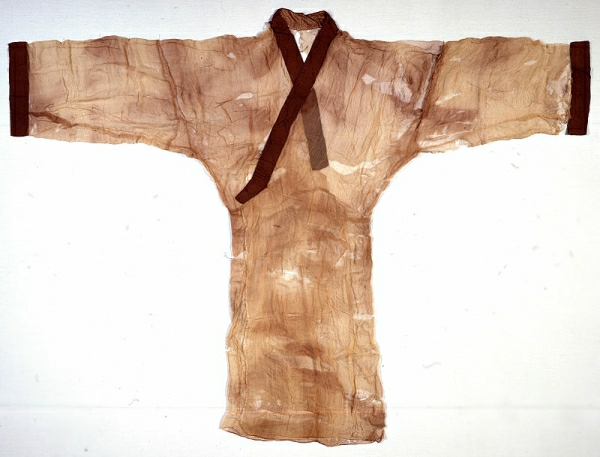
The sha gown unearthed from Han Tomb No.1 at Mawangdui in Changsha, Hunan province in 1972.
As the scorching days of summer descend upon China, modern people tend to embrace clothing characterized by lightness and thinness. But this is not as new a trend as one might think. Unlike the elaborate attire often depicted in TV series, ancient Chinese wore clothing that was lighter and thinner than modern imaginations can fathom.
Ancient stories vividly portray the lightweight clothing worn during summer. One tale recounts an encounter in the Tang Dynasty (618-907) where an Arabian merchant came across an official donning a gauzy garment. Astonishingly, the merchant could discern a mole on the official's chest through five layers of clothing.
If imagination is too taxing, let us explore some examples of summer clothing from ancient China.
Sha Gown
A sha (plain gauze) gown was unearthed from Han Tomb No.1 at Mawangdui in Changsha, Hunan province, in 1972. It is the earliest, most well-preserved, most exquisite and thinnest dress in the world. The plain gown, “thin as a cicada wing” and “light as smoke”, weighs 49 grams. It is only 25g with the sleeve openings and collar removed and can be folded into a matchbox. This piece represents the highest level of early Han in silk reeling and fabric manufacture.
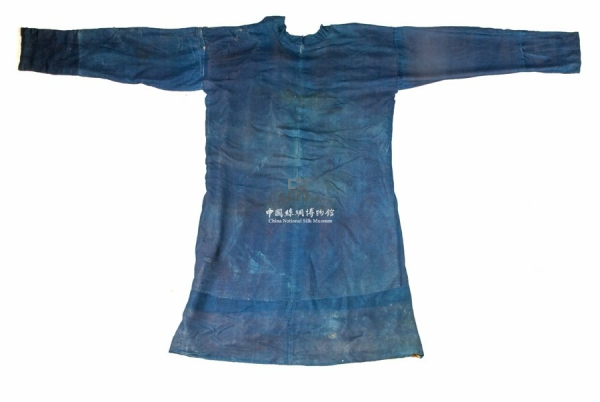
A dark blue luo robe from the Tang Dynasty.
Luo Robe
Well-suited for the humid southern regions of China, luo (gauze) has larger holes in the fabric compared with sha, making it more lightweight and breathable. From the Han Dynasty (206 BC-AD 220) to the Tang (618-907) and Song (960-1279) Dynasties, luo was predominantly used for the clothing of the nobility, and only officials of fifth rank or higher were permitted to wear garments made of the material.
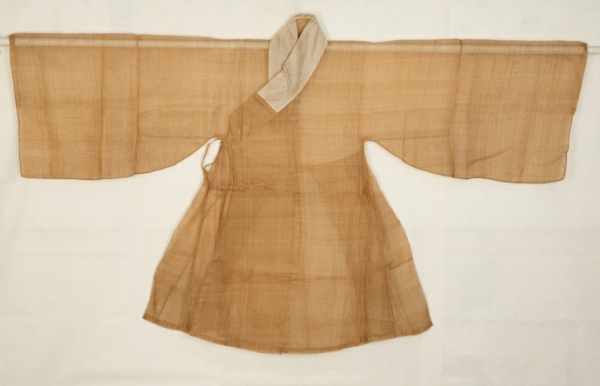
A natural-colored ge robe from the Ming Dynasty (1368-1644).
Ge Clothes
Silk fabrics such as sha and luo were highly valued and deemed luxurious for common people. However, resourceful individuals discovered a method to utilize plant fibers for clothing production, significantly reducing the cost of summer garments. Ge, also known as kudzu or Chinese arrowroot, represents the earliest utilization of natural fiber as fabric in China. Once the lunar month of June arrived, people would typically transition to ge clothing.
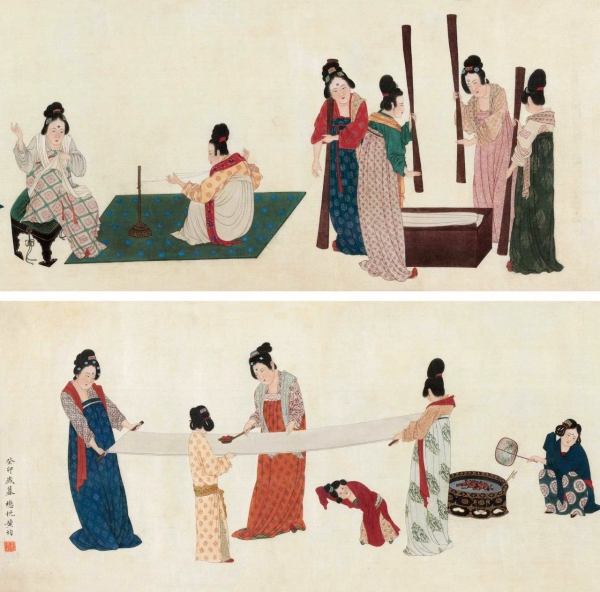
A painting depicts scenes of ancient women producing and weaving ma in the Tang Dynasty.
Ma Clothes
Among the fabrics used for summer clothing in ancient times, ge cloth was known for its quality and affordability. However, fabric made from the herbaceous plant "ma" offered an even better combination of quality and cost-effectiveness. Hemp, flax, ramie and jute are collectively called “ma”, and the word is also used to refer to these materials when the exact species is unknown.
Since the Han Dynasty, ma has been cultivated on a large scale, making the cloth inexpensive. The advancement of textile technology allowed ma cloth to be woven finely. It is breathable and easy to dye, making it a commonly used fabric for summer clothing.
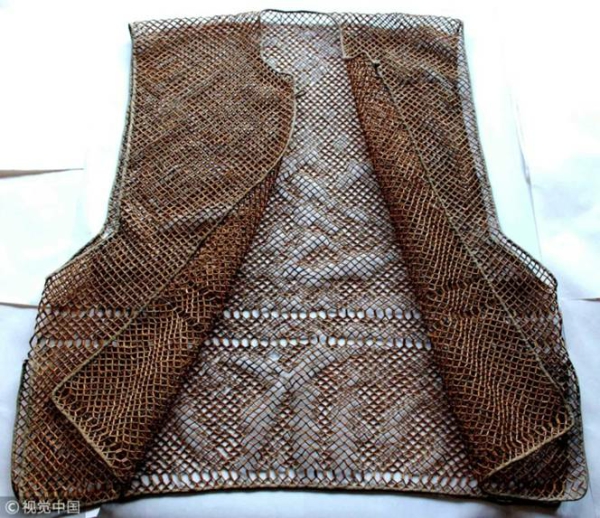
A piece of bamboo clothing from the Qing Dynasty (1644-1912).
Bamboo Clothes
Throughout ancient times, bamboo products were favored as effective tools for staying cool during the summer. Bamboo mats and bamboo pillows provided reliable comfort. People also used small bamboo tubes to create a net-like garment, serving as a means to prevent sweat.
The history of bamboo garments can be traced back to the Tang Dynasty, when China saw the emergence of bamboo gauze, a fabric woven from slender bamboo strips. In the later period of the Qing Dynasty, bamboo garments became widely popular and were even offered as tributes for the royal family.
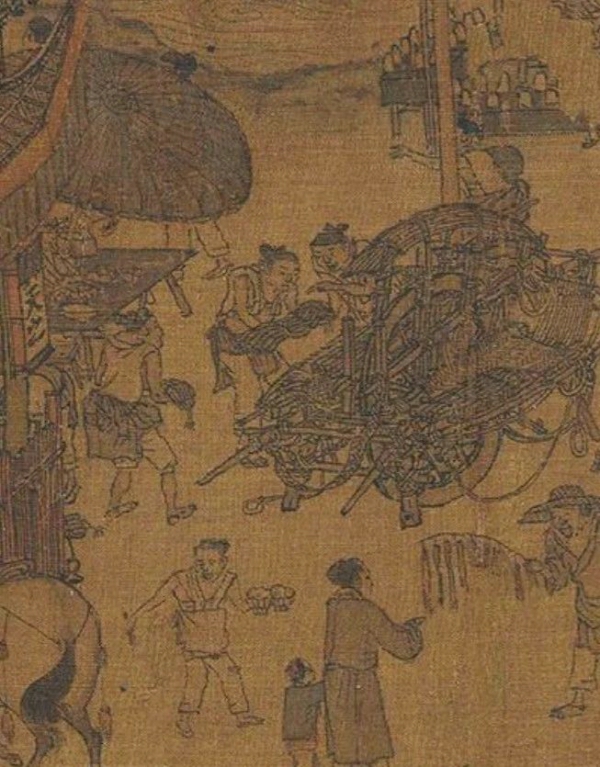
A man wearing liangdang in the painting "Along the River During the Qingming Festival".
Liangdang
A classic style of costume emerged during the Southern and Northern Dynasties (420-581). Liangdang consists of front and back pieces, later called the vest. It was convenient for people who work outdoors for long periods.
Although the living standards of ancient times cannot be compared to the modern era, the Chinese people actively explored ways to make their summers more comfortable and convenient.
Related articles
-
 Traditional Han clothing a major hit among Generation Z
Traditional Han clothing a major hit among Generation ZMore
-
 Chinese traditional clothing debuts at Venice Carnival
Chinese traditional clothing debuts at Venice CarnivalMore
-
 Posting Vintage Beijing
Posting Vintage BeijingMore
-
 Performance at Great Tang All Day Mall in Xi'an
Performance at Great Tang All Day Mall in Xi'anMore
-
 Literary classics presented through dance and song in Qingpu
Literary classics presented through dance and song in QingpuMore
-
 Tibetan seamstress draws inspiration from her multi-ethnic family
Tibetan seamstress draws inspiration from her multi-ethnic familyMore
